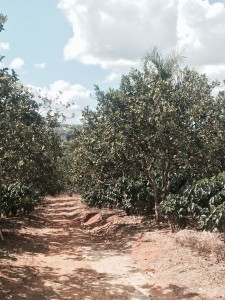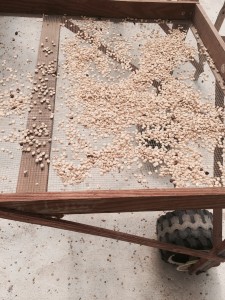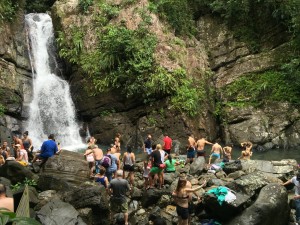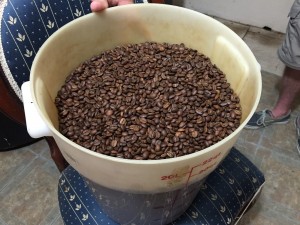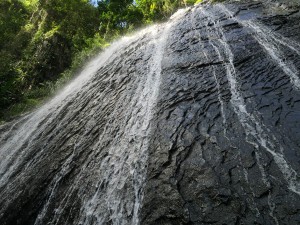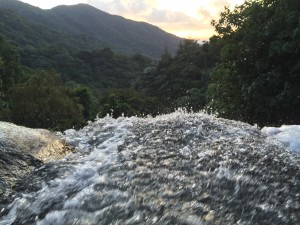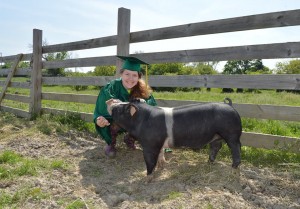Through my visit to Puerto Rico, I have vastly widened my perspective on global issues. The reason for my widened perspective is the greatly differed life style and approach to life. I have been able to witness the other side of where many consumer goods come from. This means analyzing every step in the process and finding out, for example, how coffee can go from the tree to ones’ cup, hence I can appreciate the effort put into every cup of coffee.
One occurrence that really made me think was the plantains, intended to be sent to “Costco”. “Costco” is a band which I have always shopped at. Whenever I shopped there, I gazed up at the large quantities of fruit and many other goods, wondering to myself; how could they have ever go this much fruit here at the perfect time in their life cycle. Through this trip I saw exactly where these fruits came from and witnessed every step in the process. The fruits are carefully maintained in an environment which allows their growth to be at the exact specifications of the perspective buyer. Once they are grown, the fruits are pruned off the tree and carefully hulled to the packaging plant, at which point the ripeness and quality is checked. Next, the fruit is washed and checked for any impurities. Then the stickers are put on the fruit, it is packaged and shipped off.
This process is much more complex than I expected and through this process I learned to rationale for the price of the goods. Prior the learning about the process I may have critiqued the company for paying their workers minimum wage, but judging by this factory tour and the guides statements, they need the pay minimum wage in order to keep a decent profit margin. I must take this lesson and accept the there is more to the world’s problems then what may meet the eye. This means that before critiquing a world problem one should be thoroughly understanding of all aspects of the issue to their deepest extent. In addition, one must be able to view an issue from all standpoints.
The next example occurred at the ‘Café Gran Betey’. During our visit to this coffee farm, we learned how complex and intricate the coffee making process is. Our group walked through the different environmental factors which influence the growth and taste of the bean. With this being said, Daniel, our tour guide, also walked us through the labor factors which limit the production of the farm. It was stated that many Puerto Rican citizens did not care to work all day. This is a result of the government benefits for the unemployed. These unemployment benefits allow for citizens to survive with little to no work. As a result of this the company has to work around the hours the citizens prefer to work, for they will otherwise not work.
In conclusion, my trip to Puerto Rico has helped me realize that there is much more to Global Issues then what meets the eye. This can be supplemented by blanket statements and stubbornness. It is important to consider everything involved in an issue and leave room for compromise. One must realize their place in the world and take that into consideration. It is important to consider cultures when approaching an issue and in order to get a full view of an issue, one should consult someone who lives in the issue on a day to day basis. Through this one will be able to see a problem from another person’s eyes and get their opinion, this will allow on to increase their perspective before judging a global issue.


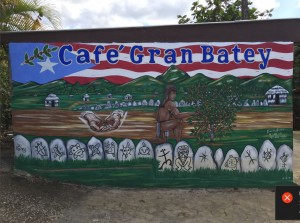
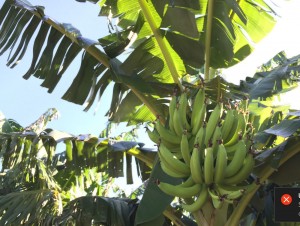
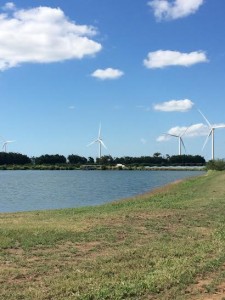
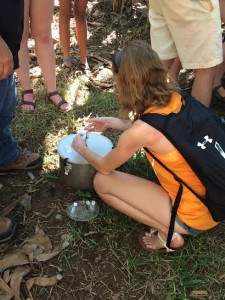
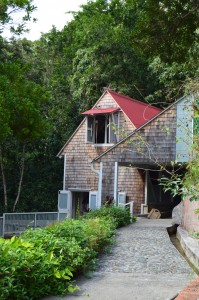 As for lifestyle that surprised me, I expected significantly less fast food places, or I guess I expected more places that would be specific to Puerto Rico and Latin America. But in reality the majority of fast food places I saw, were the exact same as those found in the US. I suppose I had this idea because I forget that Puerto Rico is actually a commonwealth of the US and therefore, I expected it to not have too many similarities. I also found interesting how early shops and stores close in Puerto Rico, I guess I’ve just become accustom to the stores in the states staying open late into the night, that I never considered a grocery store would be closed after dinner. I guess that’s because people have other things to do at night than go grocery shopping. I also thought it was cool that when in El Yunque it wasn’t just for tourist. The visitor center was geared to informing people, and the tours seemed to be more filled with tourists; but the actually hiking to the waterfall seemed like something that families might do as a day trip. I thought that was particularly great to see, because that means that the Puerto Rican people appreciate the rainforest and hopefully will be more apt to help conserve it. But at the same time there was a complete lack of recycling at most food places. So while they might enjoy the rain forest, they’re missing a very easy way to help the environment.
As for lifestyle that surprised me, I expected significantly less fast food places, or I guess I expected more places that would be specific to Puerto Rico and Latin America. But in reality the majority of fast food places I saw, were the exact same as those found in the US. I suppose I had this idea because I forget that Puerto Rico is actually a commonwealth of the US and therefore, I expected it to not have too many similarities. I also found interesting how early shops and stores close in Puerto Rico, I guess I’ve just become accustom to the stores in the states staying open late into the night, that I never considered a grocery store would be closed after dinner. I guess that’s because people have other things to do at night than go grocery shopping. I also thought it was cool that when in El Yunque it wasn’t just for tourist. The visitor center was geared to informing people, and the tours seemed to be more filled with tourists; but the actually hiking to the waterfall seemed like something that families might do as a day trip. I thought that was particularly great to see, because that means that the Puerto Rican people appreciate the rainforest and hopefully will be more apt to help conserve it. But at the same time there was a complete lack of recycling at most food places. So while they might enjoy the rain forest, they’re missing a very easy way to help the environment.
![IMG_2892[1]](http://publish.illinois.edu/lfr/files/2016/01/IMG_28921-e1452691837617-225x300.jpg)
![IMG_2902[1]](http://publish.illinois.edu/lfr/files/2016/01/IMG_29021-e1452691822927-300x300.jpg)
